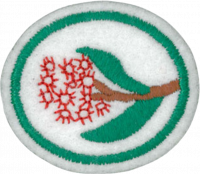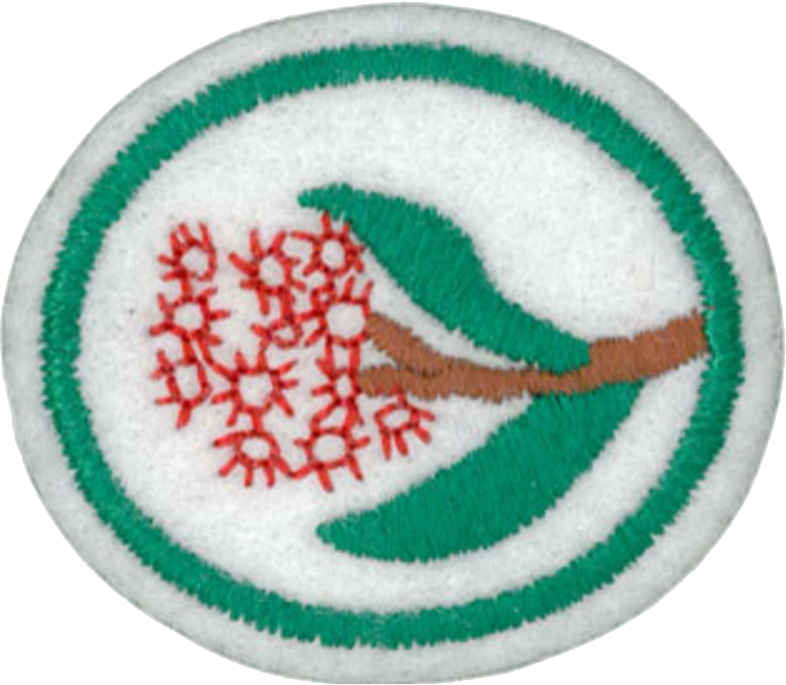AY Honor Eucalypts Answer Key
1
There are three genera of eucalypts identified by scientists:
- Eucalyptus which includes more than seven hundred species,
- Corymbia which includes 113 species, and
- Angophora which includes 10 species.
So the total number of eucalypts is greater than 823.
2
2a
2b
The name eucalypt comes from the Greek, ευκάλυπτος meaning "Well covered."
The eucalypts belong to the Myrtaceae or Myrtle family. Other members of the myrtle family include myrtle, clove, guava, feijoa, and allspice.
3
3a
3b
Eucalyptus are mostly native to Australia, with a very small number native to three other countries; New Guinea, Indonesia, and the Philippines islands.
Many Eucalyptus have been planted in various parts of the world including the dry regions of Southern California and in Africa, Spain, South America, and on forestry plantations in India and China.
4
4a
4b
4c
4d
Eucalyptus regnans, known variously by the common names Mountain Ash, Victorian Ash, Swamp Gum, Tasmanian Oak or Stringy Gum, is a species of Eucalyptus native to southeastern Australia, in Tasmania and Victoria. It is known to attain heights over 295 feet (90 metres) and is described as the tallest of the flowering plants.
5
There are many ways to divide eucalypts into groups, but the most basic is by their habit. In botany, the term habit is used most often to describe the general appearance, growth form, or architecture, of a plant. Eucalypts come in three habits:
- Mallee
- Mallee is the growth habit of woody plants that grow with multiple stems springing from an underground lignotuber, usually to a height of no more than ten meters.
- Mallet
- Unlike the mallee, the mallet habit is single-stemmed and lacks a lignotuber. Trees of this form have a slender trunk, steeply-angled branches and sometimes form thickets.
- Marlock
- Like the mallet habit, the marlock habit is single-stemmed and lacks a lignotuber. It has a dense canopy of leaves which often extends to near ground level.
6
6a
On warm days vaporized eucalyptus oil rises above the bush to create the characteristic distant blue haze of the Australian landscape. Eucalyptus oil is highly flammable (trees have been known to explode) and bush fires can travel easily through the oil-rich air of the tree crowns. The dead bark and fallen branches are also flammable. Eucalypts are well adapted for periodic fires, in fact most species are dependent on them for spread and regeneration. They do this via lignotubers, epicormic buds under the bark and from fire-germinated seeds sprouting in the ashes.
A lignotuber is a starchy swelling on underground stems or roots. Jarrah and mallee plants use them as a life support system in case of fire or animal damage. They are able to sprout back from buds on the surface of the lignotuber. This is known as coppicing.
Eucalypts regenerate quickly after fire. After the Canberra bushfires of 2003, hectares of imported species were killed, but in a matter of weeks the gum trees were putting out suckers and looking generally healthy.
6b
Many Eucalyptus species have a tendency to drop entire branches off as they grow. Eucalyptus forests are littered with dead branches. Many people have been killed as they camped underneath the trees. It is thought the trees shed very large branches to conserve water during periods of drought.
7
7a
7b
The Blue mallee, or Blue-leaved mallee (Eucalyptus polybractea) is a small multi-trunked sclerophyll tree that grows naturally in western New South Wales and Victoria, Australia. E. polybractea is the major species used to produce high grade cineole-rich (up to 91% 1,8-cineole) Eucalyptus oil, yielding 0.7-5% fresh weight. The oil is primarily used medicinally and for flavoring.
Eucalyptol (another name for the oil), is produced in Victoria, Australia in the regions of St. Arnaud, Inglewood, and Wedderburn.
8
Because of its pleasant spicy aroma and taste, eucalyptol is used in flavorings, fragrances, and cosmetics. It is also an ingredient in many brands of mouthwash and cough suppressant. Eucalyptol has also been found to be able to kill leukaemic cells.
Eucalyptus oil contains compounds that are powerful natural disinfectants and which can be toxic in large quantities. Several marsupial herbivores, notably koalas and some possums, are relatively tolerant of it. The close correlation of these oils with other more potent toxins allows koalas and other marsupial species to make food choices based on the smell of the leaves.
Eucalyptus flowers produce a great abundance of nectar, providing food for many pollinators including insects, birds, bats and possums.
It is one of many compounds that is attractive to males of various species of orchid bees, who apparently gather the chemical to synthesize pheromones; it is commonly used as bait to attract and collect these bees for study.
The Karri and the Yellow box varieties are important sources of wood for lumber. Due to their fast growth the foremost benefit of these trees is the wood. They provide many desirable characteristics for use as ornament, timber, firewood and pulpwood. Fast growth also makes eucalypts suitable as windbreaks. Eucalypts draw a tremendous amount of water from the soil through the process of transpiration. They have been planted (or re-planted) in some places to lower the water table and reduce soil salination. Eucalypts have also been used as a way of reducing malaria by draining the soil in Algeria, Sicily, Europe, and California.
Eucalyptus is also used to make the digeridoo, a musical wind instrument made popular by the Aborigines of Australia.
All parts of the eucalyptus may be used to make plant dyes that are substantive on protein fibers (silk and wool) simply by processing the plant part with water. Colors to be achieved range from yellow and orange through green, tan, chocolate and deep rust red. The material remaining after processing can be safely used as mulch.
9
For this requirement, you will need to visit a place where Eucalypts grow, such as Australia or California. There are only 2 types widely grown in California however the river red gum (E. camaldulensis) and the much more abundant Tasmanian blue gum (E. globulus) while there are nearly 600 varieties available in Australia.
You will also need a field guide to help you identify the various eucalypt species. Here are some suggested publications that might be useful:
- Know Your Own Trees: A Short Introduction to the Study of Our Common Eucalypts
- Australian eucalypts: A selection of over 80 tree studies with notes on characteristics, identification, uses and cultivation
- Eucalypts: A Bushwalker's Guide from Newcastle to Wollongong
- The Urban Tree Book: An Uncommon Field Guide for City and Town




